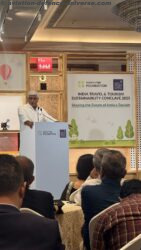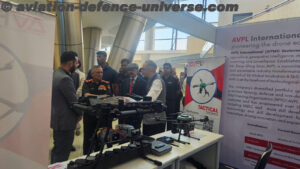By Arvind Bhakuni.
New Dehi. 31 January, 2016. The Bombay Engineer Group, popularly known as the “The Bombay Sappers”, is one of the three Groups of the Corps of Engineers. The origin of the Group can be traced back to a Company of Pioneer Lascars raised in Bombay in 1777. The present 18 Fd Coy, part of 106 Engr Regt is the direct descendant of the unit. Recognising the services rendered by the Group during the First World War, the title ‘Royal’ was awarded to it in 1921. Initially organized at Bombay in 1820, the Group has been located at Kirkee since 1868.
 The Bombay Sappers and Miners earned their first Battle Honour, Beni-Boo-Ali, in Arabia in 1821 i.e within a year of reorganising. Since then, the Group has given an excellent account of itself with 34 Battle Honours and 25 Theatre Honours during the pre-independence era and three Battle Honours and six Theatre Honours, six COAS Unit Citations, one VCOAS Unit Appreciation and 22 GOC-in-C Unit Citations after independence, which are testimony to the devotion and dedication of the gallant soldiers of the Group.
The Bombay Sappers and Miners earned their first Battle Honour, Beni-Boo-Ali, in Arabia in 1821 i.e within a year of reorganising. Since then, the Group has given an excellent account of itself with 34 Battle Honours and 25 Theatre Honours during the pre-independence era and three Battle Honours and six Theatre Honours, six COAS Unit Citations, one VCOAS Unit Appreciation and 22 GOC-in-C Unit Citations after independence, which are testimony to the devotion and dedication of the gallant soldiers of the Group.
The first gallantry award given to an Indian Soldier was won by the Group at Ghazni in the first Afghan War when six Bombay Sappers were awarded the newly established ‘Order of Merit’. During the pre-independence period as many as 861 awards were won by the Group, which include three Victoria Crosses and 563 gallantry awards which includes the Indian Army’s first Victoria Cross of World War-II conferred upon 2Lt (later Lt Gen) Premindra Singh Bhagat for most conspicuous gallantry on active service in the Middle East. 654 gallant heroes of the Group laid down their lives in the First & Second World Wars.
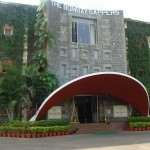 In the post-independence period, the Group is accredited with one Param Vir Chakra awarded to 2/Lt (later Maj) Rama Raghoba Rane for his gallant deeds in Indo-Pak War 1948, one Ashoka Chakra conferred upon posthumously to Nb/Sub Gurnam Singh for saving the lives of men under his command while giving demo of CLMC for visiting staff and students of DSSC at CME and displaying the most conspicuous gallantry, leadership and devotion to duty in the highest tradition of the Indian Armed Forces. Besides these, the Group is accredited with 25 PVSMs, 05 Kirti Chakras, 35 AVSMs, 07 Vir Chakras, 16 Shaurya Chakras and 151 Sena Medals and 02 Bar to Sena Medal alongwith numerous other gallantry awards.
In the post-independence period, the Group is accredited with one Param Vir Chakra awarded to 2/Lt (later Maj) Rama Raghoba Rane for his gallant deeds in Indo-Pak War 1948, one Ashoka Chakra conferred upon posthumously to Nb/Sub Gurnam Singh for saving the lives of men under his command while giving demo of CLMC for visiting staff and students of DSSC at CME and displaying the most conspicuous gallantry, leadership and devotion to duty in the highest tradition of the Indian Armed Forces. Besides these, the Group is accredited with 25 PVSMs, 05 Kirti Chakras, 35 AVSMs, 07 Vir Chakras, 16 Shaurya Chakras and 151 Sena Medals and 02 Bar to Sena Medal alongwith numerous other gallantry awards.
The Bombay Sappers comprises Sikh (M&R) 37% from Punjab, Haryana, UP & Delhi, Marathas 37% from Maharashtra, Muslims 8% from Punjab, UP & Maharashtra and Other Indian Classes 18% from all over the country. The Bombay Sappers joined the club of a select few, when they received Colours, from Shri R Venkataraman, the then President of India, on 21 Feb 1990.
In the field of sports, The Bombay Sappers are accredited with six Arjuna Awards and a Dhyanchand Life Time Award for Boxing. The Group again brought laurels to the country by winning a Gold, a Silver and a Bronze Medal in the XXth Commonwealth Games held at Glasgow, Scotland held in Jul 2014.
Today, the Group is growing from strength to strength with all our units contributing immensely to the task of nation building and keeping our flag flying high.
The Centre
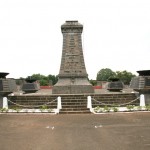 The Regimental Centre of the Bombay Engineer Group was first established in Bombay in 1820 under the command of Capt Thomas Dickinson. In December 1829, it moved to Ahmednagar where it was known as the “Engineer Institution”. A year later it was relocated at Sirur. It finally moved to Khadki, Pune, the erstwhile seat of power of the Maratha Empire, in 1868. Situated on the eastern bank of the River Mula, the Centre today is a prominent landmark in the city. It is located in two complexes, the main elements at Khadki and the remainder establishment at Dighi. Each important building has a fascinating history. The roads carry the names of prominent Bombay Sappers as well as their Battle Honours.
The Regimental Centre of the Bombay Engineer Group was first established in Bombay in 1820 under the command of Capt Thomas Dickinson. In December 1829, it moved to Ahmednagar where it was known as the “Engineer Institution”. A year later it was relocated at Sirur. It finally moved to Khadki, Pune, the erstwhile seat of power of the Maratha Empire, in 1868. Situated on the eastern bank of the River Mula, the Centre today is a prominent landmark in the city. It is located in two complexes, the main elements at Khadki and the remainder establishment at Dighi. Each important building has a fascinating history. The roads carry the names of prominent Bombay Sappers as well as their Battle Honours.
Victoria Cross Day
The Centre celebrates its Group Day on 31 Jan/01 Feb every year coinciding with commemoration of award of Victoria Cross to 2/Lt (later Lt Gen) Premindra Singh Bhagat. The citation as recorded in the London Gazette for the award of Victoria Cross to 2/Lt Premindra Singh Bhagat is reproduced below.
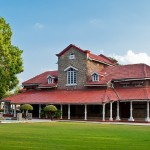 “For most conspicuous gallantry on active service in the Middle East, During the pursuit of the enemy following the capture of Metemma on the night of 31st January – 1st February 1941, Second Lieutenant Bhagat was in command of a section of a mobile Field Company, Sappers and Miners, detailed to accompany the leading mobile troops (Bren Carriers) to clear the road and adjacent areas of mines. For a period of four days and over a distance of 55 miles this officer in the leading carrier led the Column. He detected and supervised the clearing of fifteen minefields. Speed being essential he worked at high pressure from dawn to dusk each day. On two occasions when his carrier was blown up with casualties to others and on a third occasion when ambushed and under close enemy fire, he himself carried straight on with his task. He refused relief when worn out with strain and fatigue and with one eardrum punctured by an explosion, on the grounds that he was now better qualified to continue this task to the end.
“For most conspicuous gallantry on active service in the Middle East, During the pursuit of the enemy following the capture of Metemma on the night of 31st January – 1st February 1941, Second Lieutenant Bhagat was in command of a section of a mobile Field Company, Sappers and Miners, detailed to accompany the leading mobile troops (Bren Carriers) to clear the road and adjacent areas of mines. For a period of four days and over a distance of 55 miles this officer in the leading carrier led the Column. He detected and supervised the clearing of fifteen minefields. Speed being essential he worked at high pressure from dawn to dusk each day. On two occasions when his carrier was blown up with casualties to others and on a third occasion when ambushed and under close enemy fire, he himself carried straight on with his task. He refused relief when worn out with strain and fatigue and with one eardrum punctured by an explosion, on the grounds that he was now better qualified to continue this task to the end.
His coolness, persistence over a period of 96 hours, and gallantry, not only in battle, but throughout the long period when the safety of the Column and the speed at which it could advance were dependent on his personal efforts, were of the highest order.”







































